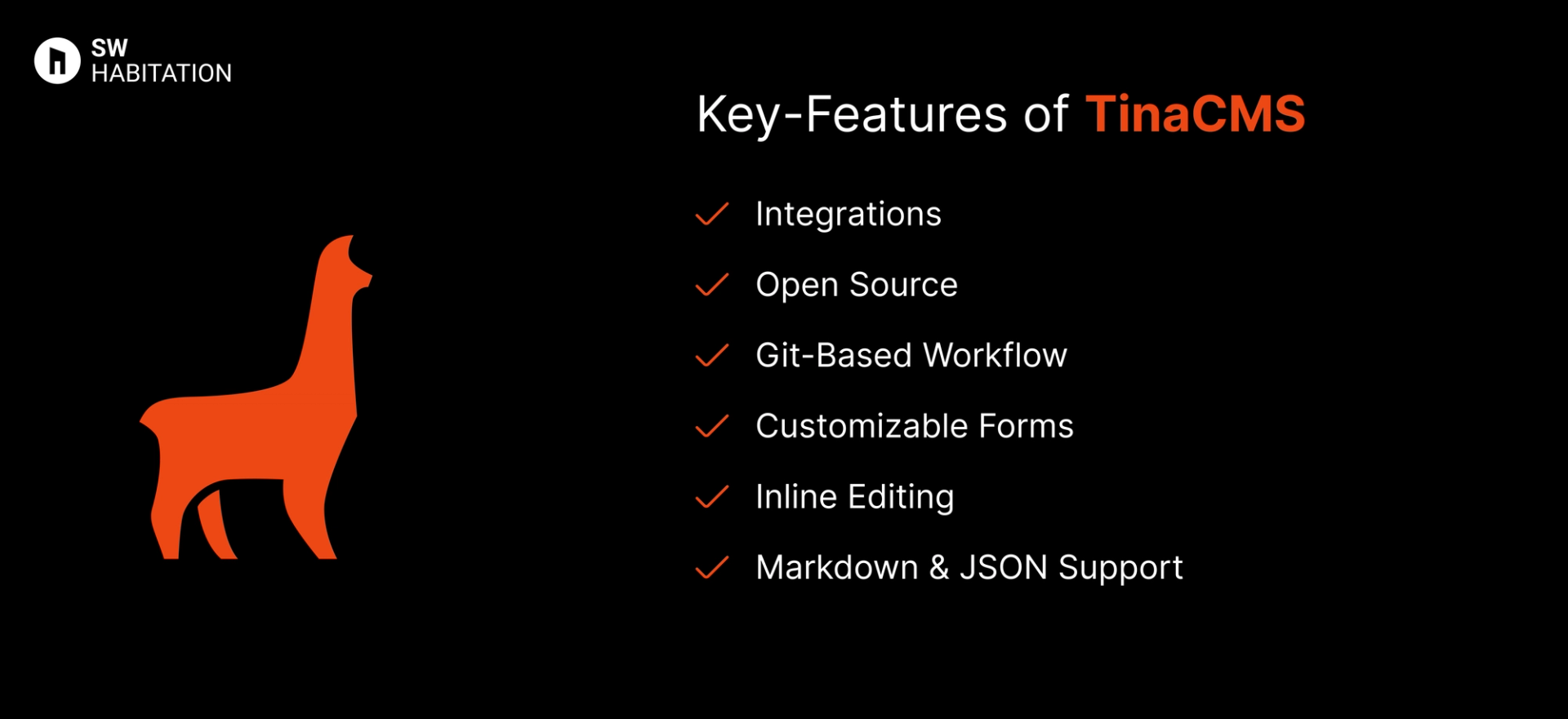TinaCMS vs. Hygraph

TinaCMS

Hygraph
You know, when you wanna make a website or a blog but don’t wanna mess with too much code? That’s where a CMS (Content Management System) comes in. It’s like a super easy tool that helps you add text, pictures, and videos to your site without needing to be a tech genius. You just log in, click a few buttons, and your content is live. It's quite simple, right?
What is TinaCMS?
TinaCMS is an open-source, Git-backed CMS that brings real-time editing to the forefront. It integrates directly into your site’s codebase, allowing content editors to make changes and see them live instantly. Think of it as giving your content team superpowers they can twist content without diving into code, while developers still enjoy full control over the project.
It’s especially popular in the Jamstack ecosystem, working well with static site generators like Next.js, Hugo, and Gatsby.
Key Features of TinaCMS


- Integrations: Works with Next.js, Gatsby, and other static site generators.
- Open Source: Free and community-driven, with no vendor lock-in.
- Git-Based Workflow: Content is stored in your Git repository, making version control simple.
- Customizable Forms: Easily create forms for content editing.
- Inline Editing: Make changes directly on the page and see them live instantly.
- Markdown & JSON Support: Works seamlessly with markdown and JSON-based content.
Advantages of TinaCMS
- Customizable: Adapt it to fit your project’s structure and needs. Free & Open Source: No hidden fees use it as you like.
- Jamstack-Friendly: Works beautifully with static site generators.
- Git Integration: Content is version-controlled with Git.
- Real-Time Editing: See changes instantly while editing.
Disadvantages of TinaCMS
- Limited Ecosystem: Smaller plugin ecosystem compared to more established CMS options.
- Git Knowledge: Editors might need a basic understanding of Git workflows.
- Developer Setup Required: Needs developer setup initially.
What is Hygraph?
Hygraph is a headless CMS built around GraphQL, offering developers a super-efficient way to manage and query content. It shines when you need to structure content flexibly and serve it across multiple platforms be it websites, mobile apps, or even IoT devices.
Instead of traditional templates, Hygraph focuses on content modeling and API-driven delivery, making it a favorite for teams working with modern web architectures like the Jamstack.
Key Features of Hygraph


- Localization Support: Built-in multi-language content handling.
- Roles and Permissions: Manage access with thorough permissions.
- GraphQL First: Designed around GraphQL, making data fetching simple and efficient.
- Multi-Platform Delivery: Serve content across web, mobile, and other digital experiences.
- API Extensibility: Extend functionality with webhooks and remote data fetching.
- Content Modeling: Create complex content structures that fit your project’s unique needs.
Advantages of Hygraph
- GraphQL Efficiency: Fetch exactly the data you need, nothing more.
- Scalable: Handles everything from small blogs to enterprise-level applications.
- Great for Teams: Roles and permissions help manage large projects.
- Multi-Channel Support: Deliver content anywhere via APIs.
- Flexible Content Modeling: Perfect for complex data structures.
Disadvantages of Hygraph
- Pricing: Free tier is great, but advanced features can get pricey.
- GraphQL Learning Curve: Requires some GraphQL knowledge to get started.
- Complex Setup: May feel overwhelming for simpler projects.
Comparison Between TinaCMS vs Hygraph
Use Cases of TinaCMS
- Markdown Blogs: Perfect for blogs or documentation sites using markdown.
- Developer-Centric Workflows: Ideal for teams that use Git for content management.
- Real-Time Editing: Great when you want instant content updates.
- Jamstack Projects: Ideal for static site generators like Next.js and Gatsby.
Use Cases of Hygraph
- Large Teams: Manage content with detailed roles and permissions.
- Multi-Platform Projects: Deliver content to websites, mobile apps, and more.
- Complex Content Models: Great for projects with diverse content structures.
- GraphQL Enthusiasts: Ideal if you’re already using GraphQL.
Other Resources
Conclusion
Headless CMS platforms make managing your website very simple and easy. Whether you’re running a blog, online store, or business, they handle the tough stuff so you can focus on your content.
With a user-friendly interface and the ability to work with any technology, you can create a site that really fits your needs.
These platforms are flexible, secure, and can grow with you. They offer features like custom content, easy editing, and integrations with other tools. Choose the one that fits your requirements and start building your dream website today 🚀
Frequently asked questions
Is TinaCMS good for non-tech users?
While TinaCMS is developer-friendly, content editors will also love its intuitive, in-context editing experience. With some initial setup, non-technical users can easily manage their content.
Can I self-host TinaCMS or use the cloud?
You can self-host TinaCMS, which gives you full control over your content management system, or you can opt for the cloud version for convenience and reduced setup time.
Can I use TinaCMS with Next.js?
Yes, TinaCMS is fully compatible with Next.js and can also be used with other modern JavaScript frameworks. It's particularly great when working with static sites.
Does TinaCMS support Markdown?
Yes, TinaCMS is Markdown-centric and integrates seamlessly with your existing markdown files. You can edit content directly in your Git repository or via the in-line editor.
Does Hygraph (GraphCMS) have a free plan?
Yes, Hygraph offers a generous free plan that’s perfect for smaller projects, personal sites, or experimentation. It includes a good amount of content, API requests, and media storage
Is Hygraph (GraphCMS) good for multi-language sites?
Hygraph provides robust localization support for managing content across different languages and regions, making it ideal for global projects.
Is Hygraph (GraphCMS) frontend-agnostic?
Hygraph works seamlessly with any frontend technology, whether you’re using React, Vue, Angular, or even static site generators like Gatsby or Next.js.
Is Hygraph (GraphCMS) only for GraphQL pros?
No, While it’s built with GraphQL at its core, the UI is simple enough for non-technical users. Developers will appreciate the full flexibility of GraphQL, but you don’t need to be an expert to use it.
